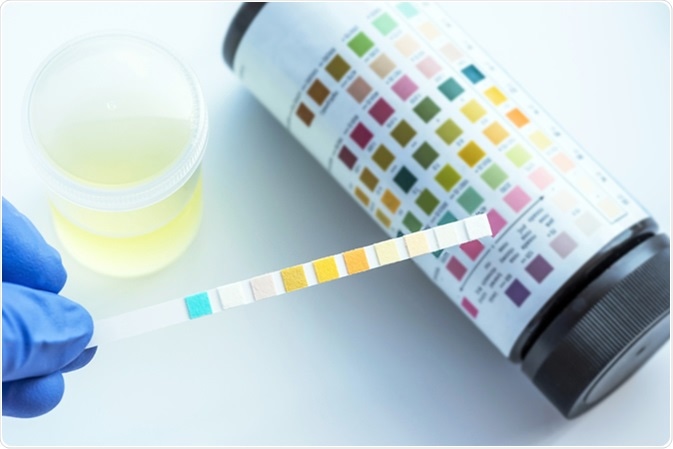Vesicoureteral reflux (VUR) is the backward flow of urine from the urinary bladder to the ureters. It is a condition that may manifest as either primary or secondary, depending on the presence of normal or abnormal urinary tracts, respectively.
Very young infants may have signs and symptoms, such as failure to thrive, anorexia, vomiting, diarrhea and lethargy. Older children may present with vague abdominal discomfort and other signs and symptoms associated with urinary tract infections (UTIs).
In order to effectively treat and manage VUR, it must first be adequately diagnosed. Diagnosis involves a series of tests that range from laboratory studies and imaging to urodynamic investigations.
Urinalysis is important for ascertaining the type of microorganisms involved in the UTI if present, while imaging studies are crucial for identifying underlying structural abnormalities of the urinary system. Lastly, these may be supplemented by urodynamic tests to determine the functionality of the system.

Urinalysis. Image Credit: Sirirat / Shutterstock
Surveillance and Pharmacotherapy
In general, the primary goal of treating children with VUR is to prevent renal complications and infection.
Because spontaneous resolution of VUR as children grow is not uncommon, many authorities recommend surveillance and pharmacotherapy if the VUR pathology is not associated with significant risk of morbidity and/or mortality.
This is particularly true for younger children, but is less likely in those who are older or have more severe VUR. Other factors such as gender, anamnesis of UTI and laterality are also predictive factors for spontaneous resolution of VUR.
Antibiotic prophylaxis is generally safe and it may or may not be used in children who are expected to experience spontaneous resolution.
Children who present with fever and UTI must be treated with antibiotics without delay, especially if pyelonephritis (i.e. inflammation of the kidney tissues) is suspected.
These children may already be in a toxic state at arrival, or they may appear dehydrated if they have been vomiting and/ or experiencing diarrhea. These are the cases that require admission to the hospital instead of outpatient management.
For some time now, the efficacy of antibiotic prophylaxis has been an area under heavy dispute by various studies.
While some show that it is beneficial, others have shown that there are no significant benefits in this particular situation. Furthermore, antibiotic prophylaxis may lead to microorganism resistance.
Nonetheless, the role of antibiotics in the setting of acute infection is not debatable, as failure to use these agents will cause worsening of the infection with serious consequences to the kidney(s).
In the setting of secondary VUR and dysfunctional micturition (i.e. urination), anticholinergic agents are another group of drugs that may be beneficial.
When they are used together with timed urination, these drugs may control the symptoms associated with the dysfunction and, in addition to this, reduce the risk of infection that accompanies VUR.
However, these drugs are used in a select group of patients to avoid exacerbating the condition and causing other problems such as constipation.
Surgery
Patients who respond poorly to medical therapy or deteriorate during surveillance are prime candidates for surgery.
Depending on the patient-specific findings, one of three major surgical approaches may be taken – open, laparoscopic or endoscopic surgery.
Open surgery is done under general anesthesia with an incision through the lower area of the abdomen to reach the anatomical malformation responsible for the VUR.
Laparoscopic surgery, in contrast to open surgery or laparotomy, uses smaller incisions to reach the area of interest. Endoscopic surgery is done via the urethra with the help of a cystoscope and a bulking agent to strengthen the distal ureteric valve.
References
Further Reading